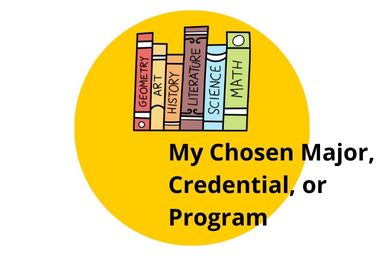
“What is your major? What are you studying?” These are two of the questions your student will face when others learn they are enrolled in a postsecondary education program. After all, attending college after high school is designed to give people a direction in life. Knowing a general career direction can guide students to make the most out of a college experience. You may know of students who went to college before they had decided on a career. Many of the students with ID may not have decided on a career direction either. Many students use the first year or two to take classes that will help them choose a career that interests them. That works for some students both with and without disabilities; however, if students can get a handle on a general career direction before going to college, they may save themselves both time and money.
How many people change their majors or credential programs during college? In one study of undergraduate students, the researchers found that the most common factor for freshmen was an interest in the subject. In other words, if a student was interested in computers, she would probably be more likely to choose a computer major. Interestingly, the women in the same study chose a major because they had some skill or talent in the subject, but the males in the study chose a major because they believed that major would help them advance their career and job opportunities as well as ensure a high standard of living or salary (Malgwi, Howe, & Burnaby, 2005)
As you can see, deciding on a college major or program of study can be a hard decision for students to make because it points them in a career direction. This choice may seem so permanent to students and their families, but think about this next question. How many people change careers during their lifetimes? According to experts, many of us make these changes throughout our lives. According to the Bureau of Labor Statistics (2019), people who were born from 1957 to 1964 worked an average of 12.3 jobs from ages 18 to 52, and almost half of the jobs were worked between 18 to 24 years of age.
Individuals with ID need to have the same options to choose and change their minds about major programs of study and the careers they pursue. Think about the following questions that will assist you and your student as you choose a career direction.
- Did your student take interest inventories or any assessments to help figure out what his/her interests were?
- What areas are of interest to your student?
- Did your student have vocational or career assessments administered during his/her high school years?
- Did your student have a summary of transition or career assessment data from high school?
- Did your student discuss career interests with his/her IEP team members?
- Did your student receive any career information or assessment from Vocational Rehabilitation counselors?
- Did your student have any work experience that were especially enjoyable or meaningful?
- Why did your student enjoy this type of work?
- What careers has your student mentioned to your family?
- Other indicators
If your student did not have the opportunity to collect
information on career interests, a variety of resources can
support you as you help them explore this important pathway. Visit
the Project 10 website
 to access various resources that can assist in determining career
interests. Additional resources are the Collaborative Assessment
Guide for Transition Planning Services
to access various resources that can assist in determining career
interests. Additional resources are the Collaborative Assessment
Guide for Transition Planning Services
 and the Transition Assessment from the Transition Coalition
and the Transition Assessment from the Transition Coalition

